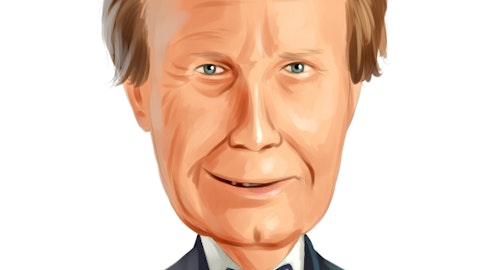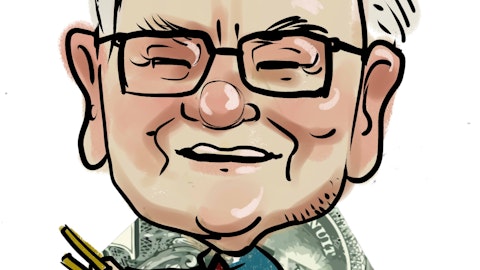Large investment fund Royce & Associates, managed by Chuck Royce, recently filed its 13F for the second quarter of 2012 and reported that its fourth largest position was $4 billion market cap metal fabricator Reliance Steel & Aluminum (NYSE:RS). The fund’s 6.2 million shares was slightly down from the end of March but the fund has been a major investor for over a year and have shared in the stock’s 28% rise since a year ago (find more stock picks from Royce & Associates). Reliance processes metals into about 100,000 products that are then provided to industrial customers.
Clearly investing in Reliance provides a good deal of exposure to industrial activity, and statistically the stock does tend to overexaggerate broader market movements with a beta of 2. However, there is a value case to be made for the stock as well, and we think that is what has attracted Royce and his team. Reliance trades at 10 times trailing earnings, and only 8 times forward earnings estimates for 2013 (sell-side analysts expect strong EPS growth next year, and the company has tended to narrowly beat expectations in recent quarters). The company also pays a small dividend yield to its shareholders.
In its most recent quarter, Reliance reported good growth in revenue (8%) and earnings (10%) compared to the same quarter in 2011. The first half of 2012 has also told a good story, with revenue rising 14% and earnings up 18% compared to a year ago. In that light, analyst expectations of about 20% EPS growth next year seem high but not particularly unreasonable, and to see the existing level of growth in a company trading at a trailing P/E of 10 is appealing. The company’s revenue growth has been boosted by recent acquisitions- on a “same store” basis revenue growth in the first half of the year came in at 7%- but given the rising margins it appears that Reliance has been able to integrate these acquired businesses into its own. According to the company, revenue growth has been primarily driven by higher volumes with pricing essentially flat compared to a year ago. In addition, the strongest customer segments it saw were energy and aerospace.
Adage Capital Management, which was seeded by Harvard Management in 2001 and is run by former employees Phil Gross and Robert Atchinson, increased its stake in Reliance by 38% in the second quarter of 2012 to a total of 1.8 million shares. Adage had moved into the stock in the summer of 2011, pulled some shares out in the fall, and now appears to be back again (research more investment activity at Adage Capital Management). Cliff Asness’s AQR Capital Management also added to its holdings of Reliance, finishing June with about 240,000 shares (see more of Cliff Asness’s stock picks).
Reliance’s closest peer is Worthington Industries (NYSE:WOR). Worthington is smaller ($1.5 billion market capitalization) and focuses on processing steel. The company reported a 12% increase in earnings in its most recent quarter compared to a year ago but earnings growth was less than 1%. The sell-side thinks that growth will pick up and Worthington trades at a forward multiple of 8. At 13 times trailing earnings, however, we would note that Street analysts expect higher future growth here than they do at Reliance. While the company is smaller, it hasn’t been delivering that magnitude of growth recently. We would also compare Reliance to Precision Castparts (NYSE:PCP) and Allegheny Technologies (NYSE:ATI). These companies trade at higher multiples, with trailing price-to-earnings ratios of 19 and 16 respectively. Analysts expect growth from both of these peers as well, pushing their forward multiples down between 10 and 14. Allegheny’s business struggled last quarter as earnings fell 12% compared to a year ago, while Precision Castparts saw double-digit percentage growth in both revenue and earnings. We think that Reliance is substantially cheaper than these two companies. It also trades at a similar forward multiple to Worthington, but with more of its expected earnings coming from maintaining its current business as opposed to achieving a steep growth curve. We would say it is better valued than its peers.




